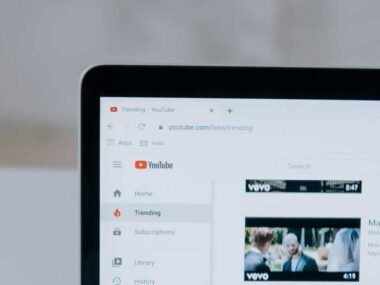Have you ever worked hard on a piece of content only to find that no one seems interested in it? You’re not alone. Many people struggle to grab attention in today’s fast-moving digital world. With so much content out there, it’s hard to stand out. However, the good news is that it’s possible—with the right techniques, you can make your content not just seen but remembered.
In this blog, we will share simple, practical ways to keep your audience engaged with every piece of content you create. Whether you’re posting travel tips for Las Vegas or promoting a local event, these strategies can help your content shine in any niche.
Know Your Audience Inside and Out
To create content that people care about, you need to know who you’re talking to. Start by thinking about their age, interests, needs, and what problems they’re trying to solve. When you understand your audience’s background, you can speak directly to them in a way that feels personal.
Once you’ve figured out who your audience is, try to picture them when you’re creating content. Imagine you’re speaking to a real person rather than a large group. This makes your writing more conversational and friendly. When your audience feels like you “get” them, they’ll want to hear more from you. Building this connection is the first step in getting—and keeping—their attention.
Use Storytelling to Make It Memorable
People naturally enjoy stories. Telling a short story, sharing an example, or walking the reader through a real-life situation can make your content more interesting. It helps your audience connect with your message on a personal level.
In a busy city like Las Vegas, where people are always surrounded by ads and flashy content, standing out takes creativity. A good story can cut through the noise. If you’re working with a video production company in Las Vegas, you can use visuals to bring your story to life and keep your viewers engaged. The goal is to make people feel something. When they feel connected, they’re more likely to take action—like clicking, sharing, or buying.
Create a Strong Hook from the Start
The first few lines of your content are the most important. If they don’t catch someone’s attention right away, they’ll move on. A good hook asks a question, shares a surprising fact, or highlights a common problem. It makes the reader curious about what’s next. When writing your opening, think about what would make someone stop scrolling and start reading.
Once you’ve got their attention, you need to keep it. Make the next few sentences clear and focused. Tell them what they’ll learn and why it matters. If you can show that your content will solve a problem or give them something valuable, they’ll want to stick around. A strong opening sets the tone for the rest of the piece and encourages people to keep reading until the end.
Make Your Content Easy to Read
People are busy, and they often read content on their phones or between tasks. That’s why it’s important to make your content easy to follow. Use short paragraphs, simple words, and clear sentences. Break up long blocks of text with subheadings and bullet points. This helps readers scan your content and find what they’re looking for quickly.
Also, try to use bold or italic text to highlight key points. This draws the reader’s eye to the most important parts. When your content is clean and organized, people are more likely to read the whole thing. They won’t feel overwhelmed or confused. A smooth reading experience keeps people engaged and makes your message easier to remember.
Use Visuals to Support Your Message
Visuals can make a big difference in how your content is received. Pictures, videos, charts, and infographics help explain your ideas and keep people interested. A good image can grab attention even before someone starts reading. Videos can tell a story or explain something in a few seconds. Use visuals to add meaning, not just decoration.
When choosing visuals, think about what will help your audience understand your point better. Don’t just use random images—pick ones that match your message. If you’re sharing a tip or teaching something, a short video or diagram can be more helpful than text alone. The goal is to make your content more engaging and easier to understand, especially for visual learners.
Be Clear About What You Want Your Audience to Do
Every piece of content should have a goal. Do you want your audience to sign up for something, click a link, or leave a comment? Whatever it is, make it clear. Add a call to action at the end of your content that tells people what to do next. Don’t assume they’ll figure it out on their own.
The key is to keep your call to action simple and direct. Use action words like “download,” “join,” “watch,” or “learn.” And make sure it feels natural, not pushy. If your content has been helpful, most people will want to take the next step. Guiding them helps build a stronger connection and moves them closer to your goal.
Keep Updating and Improving Your Content
Even the best content can go out of date. As things change, it’s important to go back and refresh your older posts. This keeps your information useful and shows your audience that you care about giving them the best. Updating your content can also help it perform better in search engines, which means more people will find it.
Look for ways to add new examples, remove broken links, or fix outdated information. You can also improve the layout, add images, or rewrite parts to make them easier to read. The more useful and current your content is, the more likely it is to keep your audience coming back. It shows that you’re always thinking about what they need.
In conclusion, creating compelling content takes effort, but it’s worth it. When you understand your audience, tell stories, write clearly, and use visuals, you grab attention and hold it. You don’t need to be flashy or perfect—just real and focused on giving value. Small changes in how you write or present your content can make a big difference in how people respond.









